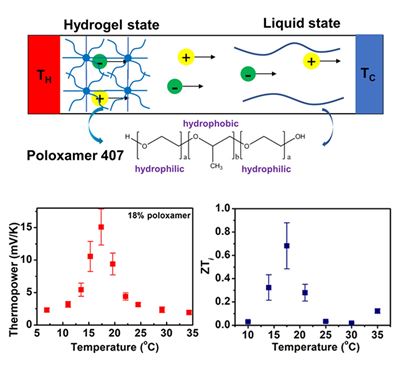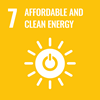 Sol-gel phase transition refers to the change from a liquid state to a gel state. A team led by Prof. Tao Xiaoming, Director of the Research Institute for Intelligent Wearable Systems, found that the sol-gel transition in ionic thermoelectrical (i-TE) materials induces a large and rapid change in viscosity and ionic transport—a property that is useful for the harvesting of low-grade waste heat to electrical power in internet of things (IoT) applications and wearable electronics.
Sol-gel phase transition refers to the change from a liquid state to a gel state. A team led by Prof. Tao Xiaoming, Director of the Research Institute for Intelligent Wearable Systems, found that the sol-gel transition in ionic thermoelectrical (i-TE) materials induces a large and rapid change in viscosity and ionic transport—a property that is useful for the harvesting of low-grade waste heat to electrical power in internet of things (IoT) applications and wearable electronics.
The team examined four types of phase transition in ionic thermoelectric materials, i.e., non-phase transition, thermal sol-to-gel phase transition, thermal gel-to-sol phase transition, and UV-induced sol-to-gel phase transition. They discovered for the first time that thermopower generation increases by 6.5 times during the sol-gel transition of a poloxamer/lithium chloride (LiCl) system. The property has also been observed in the other thermal gel-sol transitional and UV induced transitional materials.
Based on their observations, the researchers established a mechanism for modelling what takes place before, during, and after the phase-transition processes. They investigated six factors which influence the huge variation in thermopower. The study has identified a new route for the design and control of the desired TE performances of materials, thus bringing opportunities for low-heat energy harvesting applications. 




